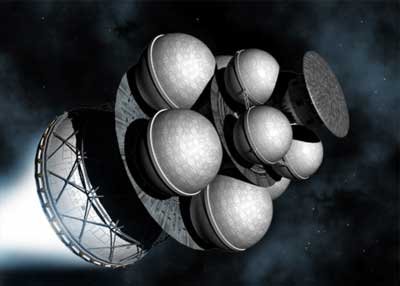Abstract. Power beaming by lasers is recognized as a key technology needed to support future space exploration. Important potential applications include beaming power from a terrestrial station to satellites or from a satellite station to remote sites on the lunar surface, Mars, etc. or to a propulsion unit. The best approach to power beaming is still under debate. However, Free Electron Lasers (FELs) and microwave generators have been proposed as alternatives to conventional lasers. In this paper, another uniquely different approach to power beaming, namely a Nuclear-Pumped Laser (NPL) is discussed.
The NPL uses neutrons from a fission reactor to excite ("pump") a gas by creating nuclear reactions in the gaseous laser medium. Since an energy source capable of high power levels is essential for any power beaming approach, the use of a fission reactor would be a common feature for multi-kW power beaming concepts. However, with an NPL, the direct neutron coupling of the reactor to the laser eliminates the need for a thermal to electrical conversion cycle, significantly increasing the overall system efficiency. Further, without a conversion sub-system, the overall system weight and volume is reduced and the unit is simplified. For land based units where weight is not crucial, a thermal conversion system can be retained to produce commercial electrical power simultaneously with the NPL power beaming operation. In this presentation we consider a specific NPL operating at visible wavelengths using a He-Ne-H2 laser medium which appears to be especially attractive for power beaming. Issues related to beam extraction and beam quality are discussed. A new technique using combined volume-surface pumping to control the beam profile is presented.

